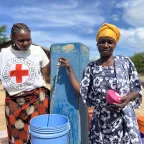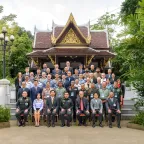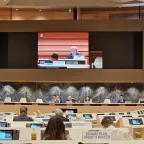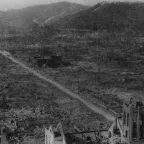Iraq: Photography Award 2025
International Committee of the Red Cross & Iraqi Red Crescent Society Welcome to our annual photography contest. The International Committee of the Red Cross (ICRC) and Iraqi Red Crescent Society …
International Committee of the Red Cross & Iraqi Red Crescent Society Welcome to our annual photography contest. The International Committee of the Red Cross (ICRC) and Iraqi Red Crescent Society …

The ongoing conflict in the Oromia region is having a devastating effect on many communities, particularly those in remote areas. Oromia doesn’t make the headlines, yet civilians continue to be …

The International Committee of the Red Cross (ICRC) has opened an office in Mocimboa da Praia district, Cabo Delgado to reach more people directly affected by the consequences of the armed conflict. …

03-08-2025 Khan Younis (ICRC) - We are appalled to learn that last night, Palestine Red Crescent Society staff member, Omar Mansour Isleem, was killed and two other staff members were injured at the …
03-08-2025 Gaza (ICRC) - The ICRC is appalled by the harrowing videos published over the last few days of Israeli hostages held in captivity in Gaza. These videos are stark evidence of the …
In an era of rapid technological advancement, the Asia-Pacific Symposium on International Humanitarian Law (IHL) and New Technologies of Warfare convened military, legal and humanitarian experts from …

In the golden hours of the morning, Isiaku walks through a thick rice paddy in Usur village, water lapping gently at his ankles. His steps are slow but guided by a strong determination carved over …

Statement delivered by Laurent Gisel, head of the Arms and Conduct of Hostilities Unit, Legal Division, International Committee of the Red Cross (ICRC), to the Open-ended Working Group on the …

The following is a joint statement attributable to President of the Japanese Red Cross Society, Atsushi Seike, and President of the International Committee of the Red Cross, Mirjana Spoljaric, on the …

05-08-2025 Geneva (ICRC) – The International Committee of the Red Cross is prepared and ready to bring in medicine, food and family news for the hostages in Gaza. To do this, an agreement must be …

Try one of the following resources:
Created in 1863, the ICRC library, alongside the ICRC archives, provides an indispensable documentary reference on the organization itself and international humanitarian law.
International humanitarian law is based on a number of treaties, in particular the Geneva Conventions of 1949 and their Additional Protocols, and a series of other instruments.
Customary international humanitarian law consists of rules that come from "a general practice accepted as law" and that exist independent of treaty law.